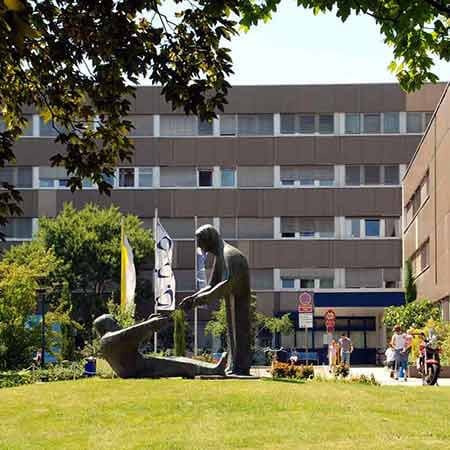About the disease
Fractured forearm occurs when a bone cracks in the arm. Overall, there are three major bones in the arms, namely humerus, ulna and radius. Fracture usually occurs in the long shaft of these bones, as this place is the most fragile one and is more susceptible to fracturing in the older age or when the trauma to the arm occurred. The humerus, which is an upper arm bone, is the most common bone, which breaks. The fracture of the forearm mostly occurs as a result of a serious shock to the forearm. Such shock can be a result of a vehicle accident or high-impact fall, usually when the forearm took the whole pressure of an arm when a person instinctively stretched the arm in order to protect other parts of the body, such as head or stomach. In some cases, people who have weak bone structure, can fracture forearm as a result of a twist or simple fall on the outstretched arm. People with osteoporosis and osteochondrosis have weaker bone structure and need to be cautious when walking on ice or other slippery surface. In some cases, contracture in the forearm can led to fracture, although the causes of that are very rare. Such muscle contractures are more common in athletes and sportsmen, who need to throw the ball with an outstretched arm to long extent. Such sports include basketball and baseball. This kind of fracture is even known as “ball thrower's fracture”.
Symptoms
- Acute pain in the forearm after the fall or accident
- Swelling
- Redness in the forearm
- Limited motion ability
- Inability to lift the shoulder
- The fractured arm becomes deformed and seems to be shorter than the healthy one
- Tenderness
- Bruising
Diagnosis
- During a general examination a doctor will examine the structure of the arm to determine if there is any deformity or if the fractured bone can be seen through the skin.
- An X-ray of the forearm is usually used to determine what type of fracture person has experienced and how severe the fracture is.
- MRI and CT scan are used sometimes to rule out the possibility of damage to the muscles and other inner structures of the forearm.
Treatment
- Osteosynthesis is a surgery, used to internally fixate the arm and reduce the pain from the fracture. Some implantable devices, usually made from the metal, are inserted into the arm to support it and to strengthen the bones. These devices need to be worn for several weeks to completely reconstruct the bone. Casting is also used to fixate the forearm in one position and needs to be worn for approximately 6 to 8 weeks.
Authors: Dr. Vadim Zhiliuk, Dr. Sergey Pashchenko













